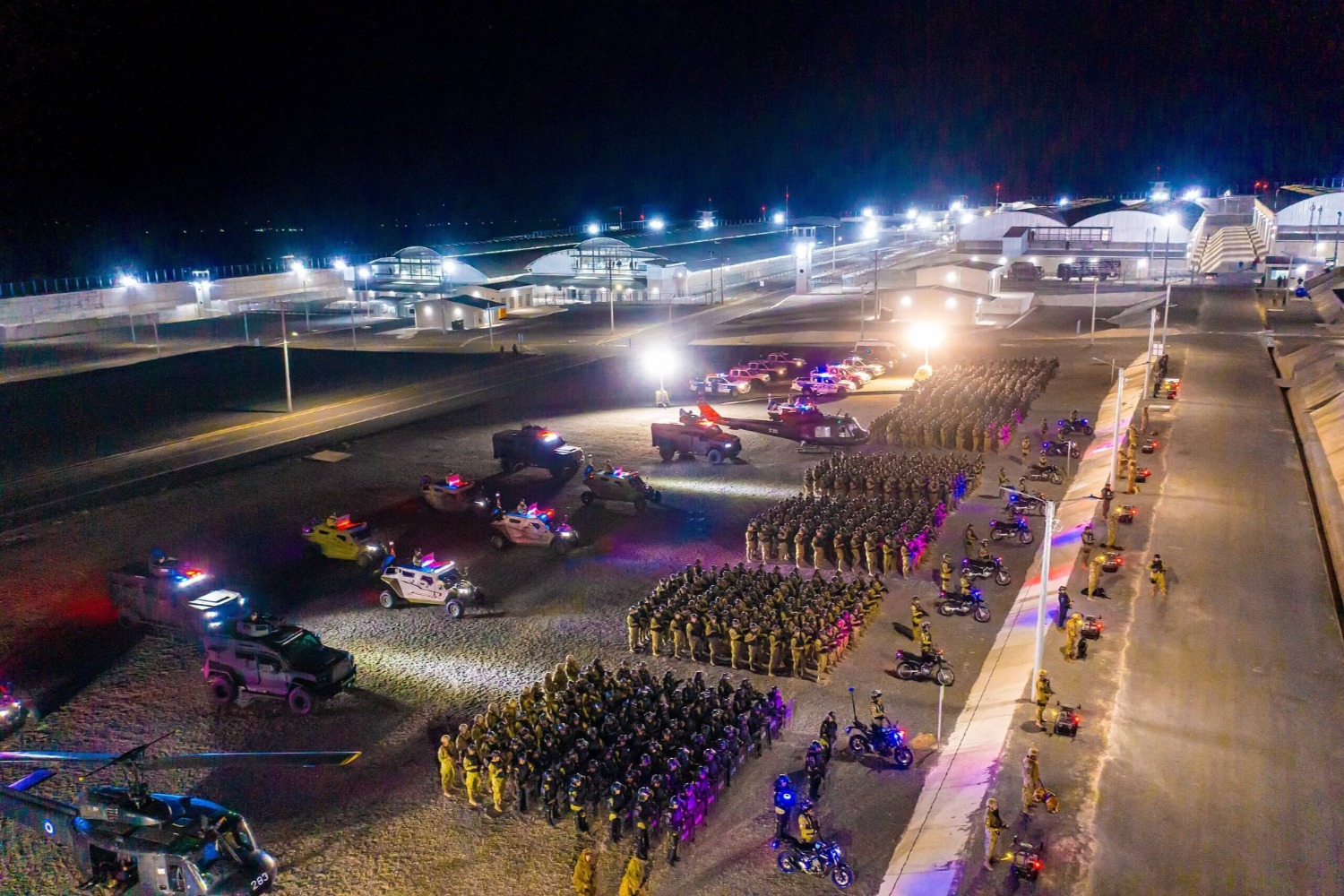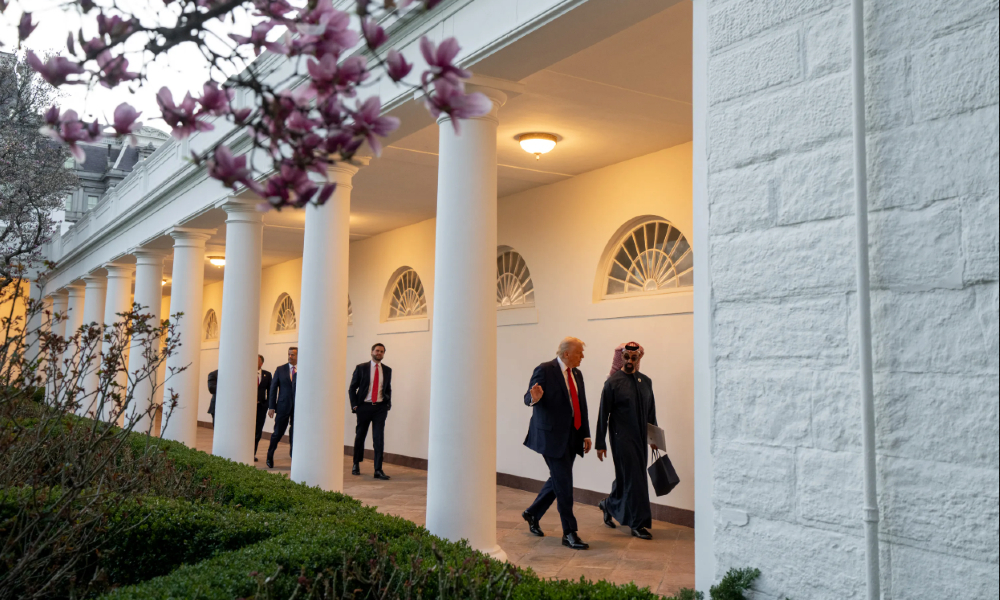A Legal Approach to the Transfer of Russian Assets to Rebuild Ukraine
This approach is about how to compensate, and save, Ukraine.

Published by The Lawfare Institute
in Cooperation With

In a recent Foreign Affairs essay co-authored with MIT economist Simon Johnson, I argued that it was essential for the G-7 and allied states to deploy a far-reaching strategy of Ukrainian reconstruction, tied to the ongoing process of EU accession for Ukraine, and funded in part by frozen Russian state and state-related assets.
The legal issue related to frozen Russian assets is important and contested. At an April 28 hearing of the House Foreign Affairs Committee, Rep. Tom Malinowski, who has been leading the legislative push to address Russian assets, asked Secretary of State Antony Blinken if he was looking beyond the issue of oligarch assets to address frozen Russian central bank assets to help rebuild Ukraine. Secretary Blinken said he agreed with this goal. The State Department was, he said, in the process of examining what could be done to utilize these assets, and how. On May 8, Josep Borrell, the EU’s foreign affairs leader, told the Financial Times that he was “very much in favour” of using these funds to rebuild Ukraine, given “the incredible amount of money” involved. “This is one of the most important political questions on the table,” he said. “Who is going to pay for the reconstruction of Ukraine.”
Paul Stephan has critiqued the legality of trying to seize or sell off Russian assets. But much of his fire was directed at a different approach that had been suggested in a New York Times op-ed by Laurence Tribe and Jeremy Lewin. Picking up on Stephan’s well-publicized critique, Roll Call wrote that Biden’s plan to use Russian money “would take an act of Congress and poses some risk to US taxpayers.” If the plan is designed carefully, neither of these statements needs to be true. Here is how, legally, the United States and allied governments might implement the approach I advocated with Johnson.
The approach uses established international law on state countermeasures for wrongful state action, including the precedent of internationally imposed compensation after the 1990 Iraqi invasion of Kuwait. These precedents must be adapted to the circumstances of this major war, which is not likely to end soon. This approach is not meant to coerce Russian behavior, though the procedures should give Russia more chances to meet its international obligations or make a deal with Ukraine. Nor is this approach about punishing Russia. It is about how to compensate, and save, Ukraine.
To start, it is important to clear up two crucial legal points.
Much of the press and public commentary about asset seizures, accompanying the House passage of H.R. 6930, has focused on oligarchs and their allegedly ill-gotten gains. I offer no view about the forfeiture arguments. The only factor of interest for the analysis here is whether the private assets can be treated legally as Russian state assets. To treat nominally private assets as Russian state assets would probably require a judicial determination of some kind that the affected individuals could contest.
But oligarch property is not the main issue. In scale of funds, the frozen central bank assets are probably at least 10 times larger in value and far more liquid than the miscellaneous assets of various oligarchs. The estimated scale of frozen central bank assets is about $300 billion; the estimated scale of frozen oligarch assets is about $30 billion. Russian central bank assets are usually held in marketable securities, cash or gold. Megayachts or mansions aren’t as immediately liquid because they must be sold.
In addition, much of the commentary, even some legal commentary, regards the U.S. or allied government interest in these assets as essentially punitive. A punitive focus on how to hurt Russia, however understandable, misses the main issue. The main issue is to help save Ukraine. Some leaders may not yet fully comprehend the financial requirements to rescue the Ukrainian economy.
Russia’s economy may contract this year by about 10-15 percent. That is an important decline. Ukraine’s economy is likely to contract this year by 40-50 percent. That is the brink of utter economic collapse.
Press and commentary naturally focus on Russia’s troubles in the fighting on the ground. But tragically, by contrast, Russia’s military-economic war has been going relatively well. It is gradually destroying Ukraine’s solvency as an independent state and the hope of its people in an independent future. Russia has effectively run a naval blockade to stop all of Ukraine’s maritime commerce, which are lifelines for Ukraine’s economy. Russia has badly damaged Ukraine’s air and ground transportation infrastructure, energy facilities, farming, and manufacturing, aside from all the damage to the cities and displacement of a large fraction of the population. As Ukraine’s economy unravels, its society and governance will also start to disintegrate. This result will probably happen in months, not years. I believe the Russian leadership understands this perfectly well.
A counteroffensive to rebuild Ukraine will require at least $500 billion over a number of years. A promising outline of such a program design, “A Blueprint for the Reconstruction of Ukraine,” has been offered by a group of outstanding economists including my co-author of the Foreign Affairs piece, Simon Johnson, working with the London-based Centre for Economic Policy Research. As that report points out, there are precedents for reconstruction assistance on such a scale, but they are indeed extraordinary.
The kind of civilian aid the Biden administration and the international financial institutions are now putting in motion may seem large—billions per month. Yet the economic side of this is still mainly just budget and humanitarian support to keep Ukraine’s government afloat. As Borrell pointed out to the Financial Times, current aid plans “were just a drop in the bucket” compared to what was needed. The much-publicized recent aid proposals do not yet come with enough money to counter the Russian war on Ukraine’s economy or offset the coming economic collapse and erosion of hope.
This is a massive amount of money needed to address a massive need. That is the context for studying how to redeploy the reported $300 billion or more in Russian central bank and other state assets currently frozen by the U.S. and allied governments. These sums do not yet include any of the energy-related accounts currently exempt from sanctions.
International Law and State Countermeasures
Stephan was rightly concerned not to set a precedent of “self-judging” in which the U.S., for example, unilaterally finds that Russia’s current war is a serious breach of international law. It wouldn’t just be the U.S., however, making determinations about the impropriety of Russia’s conduct. The U.N. General Assembly on March 2 overwhelmingly adopted an emergency resolution condemning Russia’s war, finding that Russia’s government had committed international aggression in violation of the U.N. Charter and demanding that Russia immediately stop and withdraw.
Also important is Russia’s defiance of the provisional orders issued by the International Court of Justice (ICJ) on March 16 in the case of Ukraine v. Russian Federation. By a vote of 13-2 (the Russian and Chinese judges dissenting), the ICJ ordered that the “Russian Federation shall immediately suspend the military operations that it commenced on 24 February 2022 in the territory of Ukraine.” As others have pointed out, although the ruling had focused on whether the Genocide Convention could justify Russia’s war, the ICJ’s provisional measures used “all-encompassing language” that “would apply to Russia regardless of their objection and stated justification,” including Russia’s spurious self-defense claim.
Stephan was troubled that the ICJ proceeding was only preliminary. On that point, the ICJ explicitly reaffirmed, citing its own precedents, that, though its orders in this case were provisional, they do have binding effect. As the court held, the orders “thus create international legal obligations” for Russia. By continuing its military operations for the past two months, Russia has obviously defied those obligations.
States are therefore entitled, legally, to take countermeasures to bring Russia into compliance with its obligations. Traditionally, such state countermeasures were often referred to as authorized “reprisals.” The current formulations of customary international law try to be more constructive. Russia’s compliance now includes an obligation to compensate Ukraine, and possibly other countries, for damage done.
A basic statement of the relevant international law is in the International Law Commission’s Articles on the Responsibility of States for Internationally Wrongful Acts (ARSIWA). The statement is valuable because it is a reasonable summary of long-standing customary international law and provides a common basis for discussion with allied governments around the world. The U.N. General Assembly first welcomed the preparation of the articles in 2002, in Res. 56/83, and has continued to review them periodically. The General Assembly acknowledged in 2019, for example, “that a growing number of decisions of international courts, tribunals and other bodies refer” to these articles. Governments still disagree about whether the articles ought to be codified into a formal treaty or are already serving their purpose well enough by clarifying well-established customary international law.
The main principles from ARSIWA relevant here could be applied to Russia as follows:
- As a state responsible for internationally wrongful acts, Russia is “under an obligation to compensate for the damage caused thereby, insofar as such damage is not made good by restitution.” (Article 36)
- As this is a “serious breach,” a “gross or systematic failure,” no state shall recognize a situation caused by Russia’s war as lawful or assist in maintaining this situation. (Articles 40-41)
- As the obligation breached is owed to a group of states and the international community, in their collective interest, any affected state can invoke Russia’s responsibility as if it were an injured state. (Articles 42, 48) Thus any of these states may insist that Russia perform its obligation to compensate Ukraine or other beneficiaries. (Article 48(2)(b))
- States making claims against Russia, including states other than Ukraine, as mentioned above, should give notice and invoke Russia’s responsibility for its wrongful conduct and offer to negotiate Russian compliance. (Articles 43, 52)
- To induce Russia to stop its aggression and compensate Ukraine and other damaged states, all those states can take countermeasures. Such countermeasures can include non-performance for the time being of international obligations of the State taking the measures towards” Russia, as long as they continue to comply with law on the use of force, humanitarian rights, and other peremptory norms of international law, including diplomatic and consular privileges. (Article 50)
In other words, states that unlawfully attack, destroy, and steal the property of others can limit their rights to demand that their own usual international property rights are entitled to respect.
Design of the State Countermeasures for Compensation
Commenting on my and Johnson’s argument, Stephan correctly pointed out that the law of countermeasures “imposes procedural and substantive requirements, which, depending on how it is implemented, their proposal may not satisfy.” The path presented here can chart such a path, giving notice and focusing on compensation.
My approach is a novel use of state countermeasures that may seem unfamiliar. Normally, international lawyers are accustomed to a sanctions construct with a strategy of coercive diplomacy, to induce a state to reverse its behavior, at which point the sanctions are lifted.
This major war is not that kind of situation. Coercive diplomacy is not a promising strategy. Nor are state countermeasures meant to be used in a purely punitive way.
The appropriate strategy, consistent with international law, is compensatory. Yet the strategy should also give Russia a plain chance and incentive to make a deal. That kind of strategy gives full weight to the international law that obliges Russia to compensate a directly injured state like Ukraine.
Nor is this a situation in which discussion of postwar reparations precedents is very interesting or helpful. Months into this war, Russia is looting and wrecking Ukraine on a colossal scale. Meanwhile, just in 2022, Russia is on track to earn at least $200 to $300 billion (or more) from energy sales, with its earnings greatly enlarged by its illegal war. If, on top of that, Russia’s frozen assets are merely locked up instead of put to use compensating Ukraine and other injured states, and if Russia also gets a veto power over performance of the obligation to compensate, then the whole point of the international legal obligations will become perverted—such an interpretation of international law would work to the advantage of the outlaw aggressor, destroying the rights of the injured state, which the law is supposed to serve.
Thus, in this case, the state countermeasure should be designed as a kind of equitable remedy to enforce performance of the Russian obligation to compensate. Rough analogies, in domestic law, are to involuntary trusts or conservatorships, created to transfer property where there has been a wrongful act or created to perform obligations by property holders who are unable to perform those obligations, unable to pay their debts.
In 1991, the U.N. Security Council set up the U.N. Compensation Commission for Iraq. In a series of Security Council resolutions, the compensation obligation was imposed on a defeated Iraq as a condition of ceasing military operations, administered by a newly created U.N. Compensation Commission, and funded by forcing all Iraqi oil revenue into a U.N. escrow account, from which a portion was allocated for compensation. Just this year, 2022, the commission made its final payment, having disbursed more than $50 billion. As Bernhard Graefrath and Manfred Mohr commented, “[I]n cases of aggression (international crimes) … the [compensation] obligation is not open to negotiation, it has to be accepted by the aggressor State.” In that case, the U.N. Security Council set up the enforcement procedures for payment, and “the whole economy of the country concerned may be subjected to international control.” No court decisions were required.
In this case, the Russian aggression is established by a resolution of the General Assembly utilizing its power to meet in an emergency special session “if the Security Council, because of lack of unanimity of the permanent members, fails to exercise its primary responsibility for the maintenance of international peace and security.” It is also established by Russian defiance of the unequivocal order of the ICJ.
The compensation obligation should be enforced immediately. It cannot wait for a postwar treaty or resolution because it is unrealistic to plan for a compensation fund to be imposed on a defeated Russia and it may be gravely unwise to insist on such ambitious war aims. And, by the time there is a “postwar,” Ukraine’s economy may have entirely collapsed.
States can act now to enforce Russia’s obligations either based on the current General Assembly resolution and ICJ ruling, or with a further General Assembly resolution passed in emergency special session, though I am not sure a further resolution is necessary. After due notice to Russia, giving Russia a chance to negotiate compliance with its obligations, states could transfer Russian state assets to an internationally supervised trust fund established to help compensate and rebuild Ukraine. On March 24-25, the European Union agreed to establish a suitable fund, the Ukraine Solidarity Trust Fund. Since the reconstruction plans should deeply involve the EU, this structure is superior to one created in the U.N. system.
One option is for states to transfer, or vest, title of the Russian assets to the compensation fund. In the U.S. case, that might require new legislation to provide the authority to do this. If new language is needed, it can be written narrowly to empower transfer for compensation in a case like this, not a general right of seizure.
My preference is a model in which the assets remain delineated as Russian property, not commingled with other non-Russian funds, where the transferring states empower the compensation fund to use these assets to perform Russia’s compensation obligation. Since the point of the program would be to enforce Russia’s obligation to compensate, it may help legally to use funds traceable to the Russian state. Such funds, or what remains of them, could then still be returned to Russia if the countermeasures are terminated.
In this plan, the countermeasures could be terminated, and remaining Russian funds returned to effective Russian control, once Russia either complies with its international obligations, including compensation (Article 53), or Russia and Ukraine authorize “a court or tribunal” to resolve outstanding issues “with authority to make decisions binding on the parties,” parties who would comply “in good faith.” (Article 52). Thus, beyond the original notice to Russia and opportunity to negotiate, this plan would give Russia a continuing inducement to comply with its obligations or reach an agreement with Ukraine, to regain control over remaining funds or participate in an agreed process to dispose of them (Article 49).
Russian consent to the imposition of such a compensation fund is not required by the international law of state countermeasures, or by traditional understandings of lawful reprisals. And as a policy matter, requiring Russian consent while safeguarding Russian assets from being put at risk would reward Russia’s aggression, by granting Russia a right simply to wait until Ukraine is defeated or its economy is destroyed. In such a situation, the claim of compensation might also be defeated rather than addressed, as more people’s lives, property, business activities and public infrastructure become irrevocably damaged.
The state countermeasures proposed here to help compensate Ukraine and other injured states are proportionate to the injury Russia has inflicted. This is just as international law requires. Such countermeasures are indeed “taking into account the gravity of the internationally wrongful act and the rights in question” (Article 51).
Some Policy Concerns
Some colleagues have argued to me that transfer of Russian assets will discourage future reliance on dollars and euros as reserve currencies. States around the world have already crossed that Rubicon with their massive freezing of Russia’s funds. Firms or governments managing foreign exchange accounts are already incorporating these political risks into their calculations. And as long as the dollar and the euro remain politically coordinated, linked politically and with swap lines to other currencies, asset holders will continue to rely on dollar or euro accounts.
Russia could retaliate against foreign assets held inside Russia, but that is already happening. Russia is already nationalizing some of these assets as the owners withdraw from operations in Russia and taking other actions against foreign investors. If those asset owners believe Russia’s actions are unlawful, they can file their own claims, targeting Russian assets around the world.
Also, Russia still has a large incentive to negotiate in order to protect other gigantic worldwide assets that remain at risk. Russia may have written off the already-frozen assets as gone. But Russia has definitely not written off its hundreds of billions of dollars and euros in ongoing energy revenue. These earnings are mostly deposited in banks that operate in Europe and the United States. Those accounts are still exempt from sanctions, though that could change. Over time, states and private actors could more aggressively target these and other Russian assets, including Russia’s commercial ships and oil cargoes. If it wants to prevent hundreds of billions of dollars in further losses, or draw a line to limit postwar claims, Russia will need plenty of diplomacy.
But even if transferring Russian assets did make diplomacy more difficult, the allied states should still proceed. Ukraine’s economy and society are at risk of disintegrating, and the West must soon deploy a strategy of hope if it wants to counter Russia’s strategy of despair. Only a joint effort on an epic scale can do that, one that displays positive resolve comparable to the destructive impulse animating Moscow’s war. It is also difficult to think of any better scenario for eventually disposing of Russia’s frozen assets. Returning them to Putin seems unlikely and unwise, and European, Japanese, and American taxpayers may be unlikely to support funding Ukraine’s reconstruction so long as Russia’s assets are not being utilized.
Domestic Legal Issues
The U.S. government will be able to make a reasonable argument about its authority to “transfer” the Russian funds. In Dames & Moore v. Regan, the U.S. Supreme Court upheld the president’s authority under International Emergency Economic Powers Act (IEEPA) Section 1702(a)(1)(B) to “transfer” certain Iranian assets back to Iran, via the Federal Reserve Bank of New York. The petitioner in the case argued that IEEPA gave authority only for a freeze, not a transfer.
“We do not agree,” the Supreme Court held, “and refuse to read out of § 1702 all meaning to the words ‘transfer,’ ‘compel,’ or ‘nullify.’” Orders under this statute are meant “‘to put control of foreign assets in the hands of the President,’” for use as a bargaining chip with foreign countries, for example. If the Biden administration feels it needs more authority to transfer Russian assets to an international compensation fund, Congress is likely to supply the desired language. The same is true in allied governments and their domestic laws.
In considering U.S. domestic and constitutional law, it is useful to distinguish the legal problem of oligarch assets. These assets are claimed as private property. To use these assets to help Ukraine, I believe the U.S. and allied governments have two options. They can use forfeiture proceedings, if they can associate the assets with unlawful conduct as required by their forfeiture laws. Then the new asset holder, like the U.S. government, can liquidate or transfer the property in any lawful manner. Or, second, if they have sufficient evidence, they can use legal proceedings to determine that the property should, in fact, be regarded as property of the Russian state. Then, in that second case, the Russian state assets can be transferred for performance of Russia’s obligations.
Stephan makes a reasonable argument that the Russian state might well have a right to sue to contest the seizure of its assets. “When bringing a suit,” he acknowledged, Russia “necessarily would have to waive [its] immunity from U.S. judicial process.” The safest legal approach for the U.S. might be one that transfers traceable Russian state assets to the international compensation fund, not to the U.S. Treasury Department. It is not clear that the Russian state would be successful in U.S. court in an attempt to challenge a U.S. state countermeasure, valid under international law, as a violation of the Russian government’s supposed U.S. constitutional rights under the Fifth and 14th Amendments.
If such a challenge was heard on the merits in a U.S. court, then I believe the U.S. position could rely on the due process required in international relations by international law, in other words, the notice and opportunity to negotiate (Articles 43 and 52, mentioned above). Russia would also have the option to seek redress in the ICJ. Russia could even ask for provisional orders delaying the asset transfers or disbursements by the compensation fund. The ICJ would probably await, with great anticipation, such a rediscovered Russian interest in the ICJ’s provisional orders.





